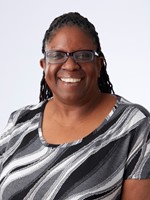

Easy and Engaging Projects for Your Reading Classroom |
Listen and learn : Ed talk
Dr. Ruth Okoye Karen Streeter
Create an environment that allows students to share important connections they have made between what they have read and their personal lives, other texts and the world around them. Join us to look at a few quick and easy lesson adaptations that gauge student comprehension using authentic assessments.
| Audience: | Coaches, Curriculum/district specialists, Teachers |
| Skill level: | Beginner |
| Attendee devices: | Devices useful |
| Attendee device specification: | Smartphone: Android, iOS, Windows Laptop: Chromebook, Mac, PC Tablet: Android, iOS, Windows |
| Topic: | Online tools, apps & resources |
| Grade level: | PK-12 |
| Subject area: | Language arts |
| ISTE Standards: | For Educators: Facilitator
Creative Communicator
|
There's a reason why it is hard to let go of classic reading projects - they work. At the end of the day, we need to know that students can apply the techniques they have been taught. So join us for this session, and we’ll share some options for updated reading projects that engage students using technology and the SAMR model for technology integration. Participants will leave with a clear understanding of how to use the SAMR framework to shift traditional projects into updated technology integrated ones. We’ll also share several tools and templates that lend themselves to authentic assessment of reading comprehension.
0-2: Introductions
3-5: Review SAMR
5-10: Copyright considerations and use of graphic organizers
10-15: Technology as Enhancement: Substitution (using instant blog platforms)
15-20: DEMO: Telegraph
20-25: Technology as Enhancement: Augmentation (using templates and images)
25-30: DEMO: Big Huge Labs
30-35: Technology to Transform: Modification and Redefinition
35-40: DEMOS (Deep Learning Tools and Templates)
40-45: Q&A
Edutopia. (2008, July 15). What Are Some Types of Assessment? Edutopia; George Lucas Educational Foundation. https://www.edutopia.org/assessment-guide-description
Portnoy, L. (2018, February). How SAMR and Tech Can Help Teachers Truly Transform Assessment. EdSurge; EdSurge. https://www.edsurge.com/news/2018-02-01-how-samr-and-tech-can-help-teachers-truly-transform-assessment
Ray, D. K. (2021, April 26). Is SAMR Dead? TechLearningMagazine. https://www.techlearning.com/news/is-samr-dead
Ruben Puentedura on Applying the SAMR Model. (2014, October 10). Common Sense Education. https://www.commonsense.org/education/videos/ruben-puentedura-on-applying-the-samr-model
Terada, Y. (2020, May 4). A Powerful Model for Understanding Good Tech Integration. Edutopia. https://www.edutopia.org/article/powerful-model-understanding-good-tech-integration
Valencia, S., Hiebert, E. H., & Afflerbach, P. (1994). Authentic reading assessment : practices and possibilities. International Reading Association.


Ruth Okoye is an instructional technologist and currently the Director of K12 Initiatives at the Source For Learning. A veteran educator, Ruth has spent over 30 years helping teachers learn effective technology implementation strategies. A frequent presenter on edtech coaching, information literacy, accessibility strategies, and using tech tools for formative assessment, Ruth contributes to the global conversation on these topics in both face-to-face and virtual environments. As a Microsoft Innovative Educator Expert (MIEE), and a Microsoft Certified Trainer, she often shares her passion for leveraging free tech tools as a digital equity strategy.


Karen Streeter is an instructional designer and currently Managing Director of Cogent TLC. Karen also coordinates professional learning opportunities for teachers through her work as a consultant for The Source for Learning. She has 25 + years of experience in public and higher education and served on the VSTE Board of Directors. A former Instructional Technology Supervisor, Ms. Streeter has a long history of presenting at state and national conferences. A Microsoft Innovative Educator Expert (MIEE) and Microsoft Master Trainer, she uses digital tools to level the playing field so that all students have access to sound instruction.
Adobe Spark: Sparking Creativity
Beyond the Slideshow: Unleashing Student Creativity With Google Slides
Leading Beyond Your Comfort Zone: Becoming Comfortable With Being Uncomfortable